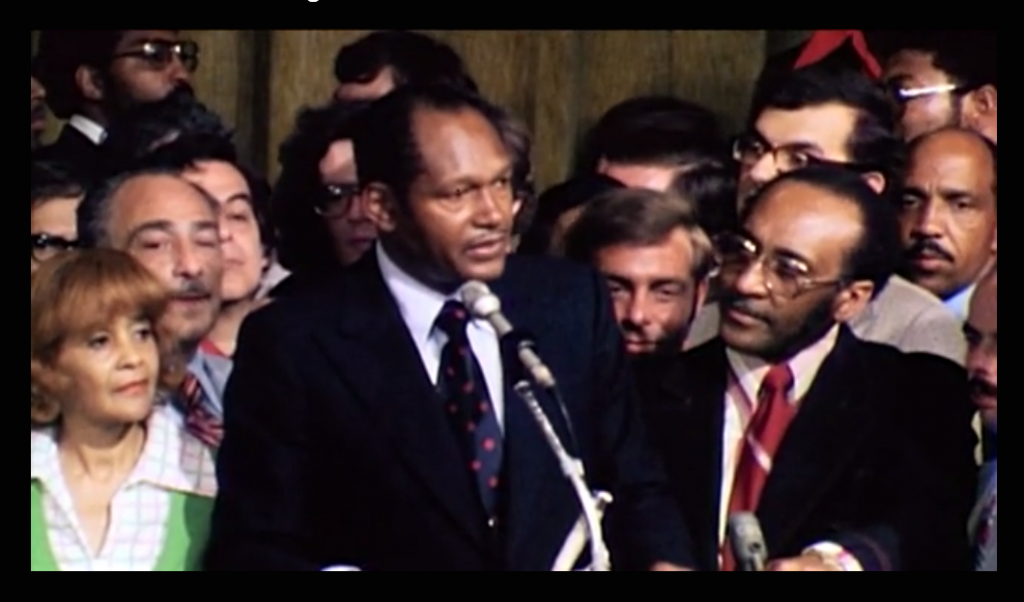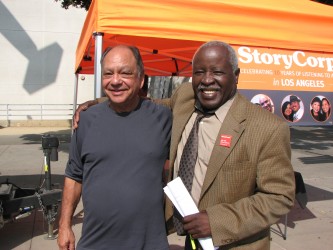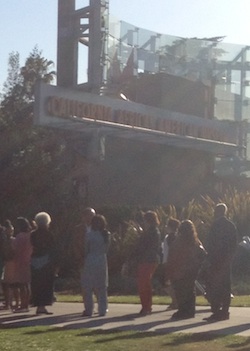The California African American Museum premiered a documentary film yesterday on Tom Bradley, the first African American mayor of Los Angeles. The 46-minute film titled “Tom Bradley: Impossible Dream” will be distributed to Los Angeles Unified School District high schools as a way for 11th and 12th graders to commemorate Black History Month.
Click play on a story from Annenberg Radio News to hear comments on Bradley’s legacy from South L.A. councilman Bernard Parks and others.
Watch an excerpt from the film on Vimeo.













 Some of the most compelling pieces were by David Hammons, a multimedia artist that went on to win the MacArthur Fellowship (also known as the “Genius Grant”) in 1991.
Some of the most compelling pieces were by David Hammons, a multimedia artist that went on to win the MacArthur Fellowship (also known as the “Genius Grant”) in 1991. 




